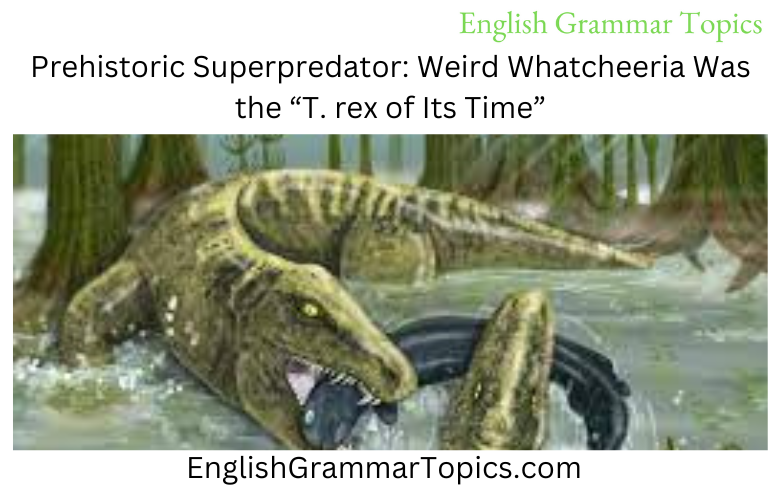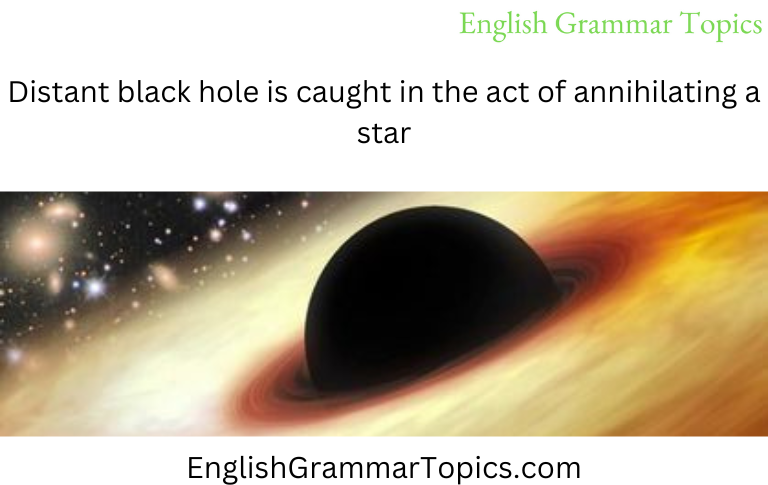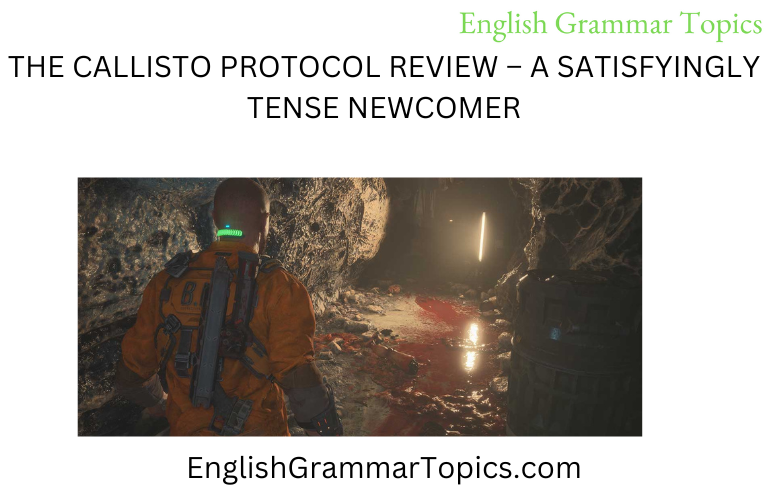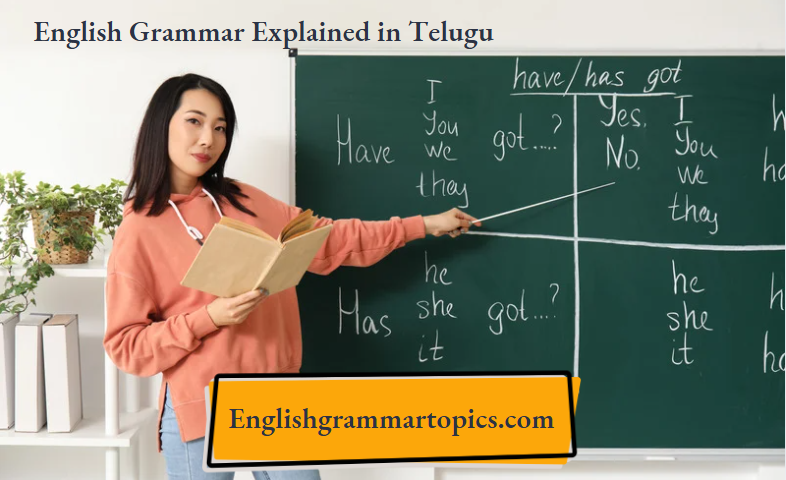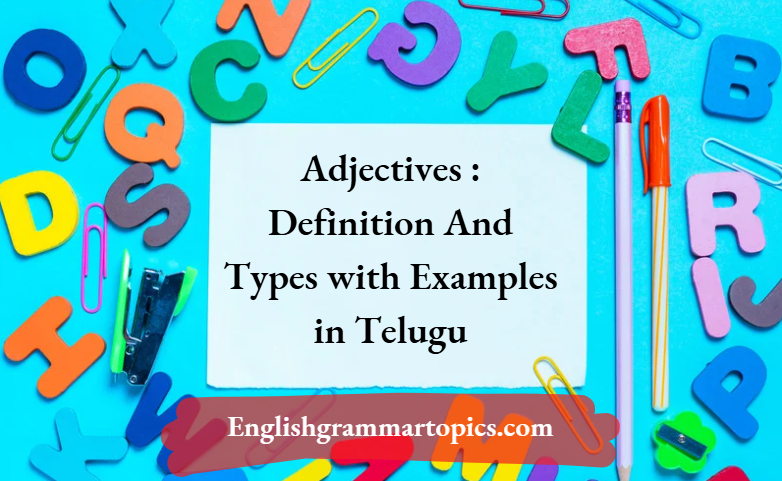Alphabet – Vowels and Consonants
- ప్రతి భాషయు వాక్యములతో నేర్పబడును. వాక్యములు మాటలతో నేర్పబడును. మాటలు శబ్దముల (Sounds) తో నేర్పడును; శబ్దములకు వ్రాత గుర్తులు అక్షరములు.
- ఇంగ్లీషు భాషకు అక్షరములు 26, వీనికి Alphabet అని పేరు. ఇవి Capitals అని Small letters అని రెండు విధములుగా వ్రాయబడును; వానిలో అచ్చు అక్షరములని, వ్రాత అక్షరములని రెండేసి రకము లుండును.
- CAPITALS (పెద్దవి) :
(a) అచ్చు అక్షరములు
ABCDEFGHIJKLM
NOPQRSTU V W X Y Z
(b) వ్రాత అక్షరములు :
A B C D E F G H I J K L M
NO P Q R S T U V W X Y Z - Small letters (చిన్నవి)
(ఎ) అచ్చు అక్షరములు :-
abcdefghijklm
nopqrstuvwxyz
(b) వ్రాత అక్షరములు
a b c d e f g h i j k l m
n o p q r s t u v w x y z
ప్రతి వాక్యపు మొదటి మాటలోని మొదటి అక్షరము, మనుష్యుల పేర్లు. పట్టణముల పేర్లు, దేశముల పేర్లలోని మొదటి అక్షరములు ‘Capitals’ నారంభించవలెను.
3. అక్షరములు రెండు విధములు :
(a) అచ్చులు (Vowels)
(b) హల్లులు (Consonants)
Read and Learn more English Grammar Topics
- (a) a, e, i, o, ur అను అక్షరములు గాని, వానిచే సూచించబడి వానియంతబ అవే ఉచ్చరింపబడు శబ్దములుగాని Vowels అనబడును.
Definition:- Any of the lettersa, e, i, o, uor of the sounds (represented by them) that can be uttered without any other letters are called Vowels.
(b) y – Usually in the middle or at the end of a Syllable * of a word, it is a vowel (as in myth, happy, my)
(c) w: It is a vowel at the end of syllable as in new. - అచ్చుల సహాయము లేనిదే తమంతట తాము ఉచ్చరింపబడనేరని తక్కిన యక్షరములు Consonants అనబడును.
Def:- Anon-vowel letter (of the alphabet) which cannot
be sounded without the aid of a vowel is called a Consonant.
a,e,i,o, u లు కాక తక్కన అక్షరములును, ఒక మాటకుగాని Syllable కు గాని ఆరంభమందువచ్చు w, y లుసు (e.g. Water, walk, went a way, sho-wer, అను మాటలలోని w ను; you, yard, beyond, lo-yal అను మాటలలోని yను హల్లులు (Consonants).
(Syllable) ఒక అచ్చుగా గాని ఒకే అచ్చుధ్వని నిచ్చు అచ్చుల సము దాయముగా గాని యుండవచ్చును. ఉదా: away (a-way) లో a అనునది ఒక syllable, way అనునది మరియొక Syllable, either (ei-ther) లో e, i అను రెండును కలిసి ఒక అచ్చువలె పలుకుటనే ఒక syllable అగును. their మరియొక syllable.
ఒక్క మారుగా నుచ్చరింపదగిన మాటగాని, మాటయొక్క భాగముగాని syllable అనబడును.
ఒకప్పుడు syllableలో, ఒక అచ్చుగాని ఒక అచ్చు యొక్క ధ్వని నిచ్చు అచ్చుల సముదాయముగాని, హల్లులతో కలిసి యుండవచ్చును. ఉదా:- heavy (hea-vy) లో hea ఒక syllable, vy మరియొక syllable.
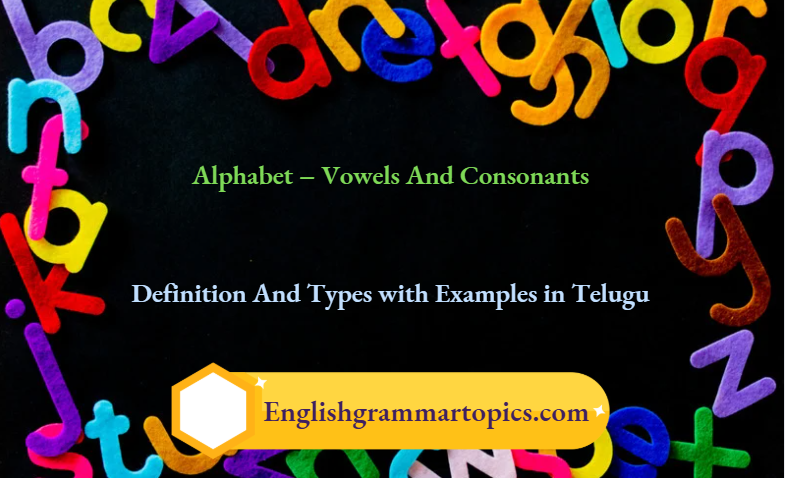
Parts of Speech (భాషాభాగములు)
English భాషలోని మాటలన్నియు, వాక్యములో నవి చేయు పనులను బట్టి ఎనిమిది విధములుగా భాగింపబడినది. ఆ విధములకే Parts of Speech (భాషాభాగములు) అని పేరు.
Def:- Words are divided into eight kinds according to their use and these kinds are called Parts of Speech.
అవి ఏవన :-
1. Noun (నామవాచకము)
2. Verb (క్రియ)
3. Pronoun (సర్వనామము)
4.Adjective (విశేషణము)
5. Adverb (క్రియావిశేషణము)
6. Preposition (విభక్త్యర్ధ పదము)
7. Conjuction(సముచ్చయము)
8. Interjection (భావోద్రేక ప్రకటనార్ధకము)
1. The Noun (నామవాచకము)
Gopal, Krishna, John అను మాటలు ఎవరి పేర్లు ? మనుష్యుల పేర్లు. Calcutta, Madra, Bombay అను మాటలు వేని పేర్లు? పట్టణముల పేర్లు. Cow, Dog, Cat అనునవి వేని పేర్లు? జంతువుల పేర్లు. Book, Pen, Slate అను మాటలు వేని పేర్లు ? వస్తువుల పేర్లు. Crowd, rice, courage -ఇని కూడ పేర్లు అని గ్రహించనగును. ఇట్టి పేర్లు Nouns ( నామవాచకములు)అనబడును.
మనుష్యులు, జంతువులు, స్థలములు, వస్తువులు (అనగా పర్వతములు, నెలలు, వారములు, నదులు, సముద్రములు, కుర్చీలు) మొదలగువేని పేర్లయినను Nouns ( నామవాచకములు) అనబడును. ఉదా:- Gopal, Mary, Calcutta, India, Dog, Cat, Chair, Book, The Godavary, The Red Sea, The Vindhyas, January, Sunday, Flock, Milk, P
Def:- A Noun is th: name of a person, place or thing.
Ex. 1
Pick out the Nouns in the following:
ఈ క్రింది వానిలో Nouns చెప్పుము.
(a) 1. The book is on the desk.
2. The chair is in the room.
3. The pencil is on the table.
4. The bench is near the wall.
5. The boys are sitting on the bench.
6. The man has a cap on his head.
7. The duster is on the floor.
8. The bird has two wings.
9. The child has two hands.
10. There is water in the cup.
11. The lamb is eating grass.
(b) 1. Children play.
2. Birds sing.
3. The goat fell into the well.
4. Mangoes are sweet.
5. Gopal sat on the bench.
6. The peon posted the letter.
7. Calcutta is a big city.
8. The Godavari is a holy river.
9. Cats kill rats.
10. Flowers grow in the garden.
11. He put the money into his pocket.
12 Monkeys climb trees.
13. Children love their parents.
14. The tank is full of water.
15. The cow gives milk.
16. Boys and girls go to school.
17. Give me a long stick.
Ex. 2
Fill-up the blanks with Nouns
ఈ క్రింది వానిలో ఖాళీస్థలములను Nouns తో పూర్తి చేయుము :
(a) 1. The room has two- 2. The boy is in the 3. man walks with his 4. The boy has a —- in his 5. The sits on the chair. 6. The girl is writing on the —- -7. The –is in the box. 8. The map is on the — 9. What colour is the—-? 10. There are no —-on the tree. 11.The—– is drinking 12.—– go to school. 13. I see two birds on the —
b) 1. I hear with my —2. I see with my—-3. He thinks with his—–4. The —–shines at night. 5. The sun rises in the—-6. Fishes live in ——7.—-grow in the gardens. 8.— made all things. 9.Birds fly with their—–10. All rivers at last run into the—-11. We cross a river by a——12. The—–crows. 13.Fruits grow on ——14. The farmer ploughs his——-.
THE VERB
The Verb (క్రియ)
“The cow eats grass” “The man saw the dog” అను వాక్యములలోని eats, saw అను మాటలు ఏమి తెలియజేయును? Cow, man చేయు పనులను తెలియజేయును. ఇట్టి పనులను తెలియజేయు మాటలు Verbs (క్రియలు) అనబడును.
2. ‘This book is on the table’ అను వాక్యములో is ఏమి తెలియజేయును ? పుస్తకము యొక్క స్థితిని చెప్పును. ఇట్టి స్థితులను
తెలిజేయు మాటలు కూడ Verbs అనబడును.
3. ‘ I have a pen’ అను వాక్యములోని have ఏమి తెలియజేయును? ఒకదానిని కలిగియుండుటను తెలియజేయును. ఇట్టి మాటలు కూడ Verbs
అనబడును.
పనులను, స్థితులను కలిగియుండుటను తెలియజేయు మాటలు Verbs అనబడును. ఉదా : walk, run, is, own, belongs..
Def:- A Verb is a word which expresses “doing, being, or possessing”; as Rama walks. The penis black. Iown a house in this town.
Ex. 3. Point out the Verbs in the following :-
ఈ క్రింది వానిలోని Verbs చెప్పుము .
(a)
1. I see a ball.
2. Birds fly.
3. The boy runs.
4. Krishna brings water.
5. The sky is blue.
6. He has a pen.
7. Dogs bark.
8. Boys go to school.
9. Where are your books?
10. How many hands have you?
11. The boy is writing.
12. The girl shuts the door.
13. Weeat food.
14. Itis raining.
15. Who sits on the chair?
16. The boy comes.
17. The child plays.
(b)
1. A tiger killed the goat.
2. Stones are very heavy.
3. He went home.
4. The boys are playing.
5. We sleep at night.
6. Cows eat grass.
7. Bring some water.
8. Sit on the bench.
9. Bullocks draw carts.
10. She reads well.
11. The old man tells stories.
12. The boy is talking to his father.
13. I gave him a book.
14. The cat is very pretty.
15. He drinks water.
16. The horse runs fast..
Ex-4. Fill up the blanks with Verbs :-
ఈ క్రింది ఖాళీస్థలములను Verbs తో పూర్తి చేయుము (a) 1. The sun—–2. The dog—-3. Fire —4. Birds—– 5. The bird—–6. Children – —-7. The child—–8. Fishes——9. Dogs——–10.——the door. 11. The horse—-12.Boys——13. on the bench. 14. The cock — –15.———your books down.
(b) 1. This——- my pen. 2. He——–at the map.3. The girl—– on the slate. 4. The cow——two horns. 5. You—–a teacher. 6. The calves.—–the milk. 7. They——- writing copies. 8. They—-no caps.
9. Ia scout. 10.——-he a teacher? 11.——-they school boys?
(c) 1. I——with apen. 2. Krishna— — on the mat.3. The boy—–water.4. – —- me your book. 5. What —–your father? 6 . —–me your nose.7. Where — — your books? 8.—– your book with you. 9. How many eyes ——-you? 10. The teacher —– on the blackboard. 11. Whose books —- these ?12.—–a rupee from him. 13.—-him a rupee.
(d) 1. We must ——–every promise that we —–2. The watch —–good time . 3. The teacher ——my request. 4. We should never —–our promises. 5. I——- in an application for leave . 6. He —-for ten days leave. 7. He —— hold of a rope . 8 . They —— a trap for catching mice. 9. The bird ——-some eggs in the nest .10. I have to ——- an urgent demand this month . 11. He —–prayers to god . 12. He ——his heart to his friends. 13 Every Hindhu ——his prayers at dawn to the sun God .
Ans:- 1. keep, make 2. keeps. 3. granted 4. break 5. put 6. applied 7. caught 8. set 9. laid 10. meet 11. offers 12. opened 13. says
3. The Pronoun (సర్వనామములు)
‘Gopal bought a mango’ ‘Gopal gave the mango to Gopal’s brother’s aden’Gopal bought a mango’; ‘He gave it to his brother’ అని చెప్పుదుము. ఈ వాక్యములో he, it, his అను మాటలు వేనికి ador dat hoe? Gopal, mango, Gopal’s e-Nouns కు, బదులుగా క్రమముగా ఉపయోగింపబడినవి. ఇట్టి మాటలు pronouns , సర్వనామములు) అనబడును.
Nouns (నామవాచకములు) కు బదులుగా ఉపయోగించు మాటలు Pronouns (సర్వనామములు) అనబడును. ఉదా :-
he, they, I, may, thou, you, yours, she, it etc.
Def: A Pronoun is a word used in the place of a noun.
N.B. Pronouns help us to avoid repetition of nouns.
Ex. 5.
Name the Pronouns in:-
ఈ క్రింది వానిలోని Pronouns చెప్పుము.
1. I love my mother.
2. Your sister is very kind to me.
3. We have placed our books here and we don’t find them.
4. Rama asked his father to give him a ball.
5. Our parents told us to do their bidding.
6. My aunt took her children for a walk.
7. She is fond of them and they are fond of her.
8. My kitten is running after its mother.
9. Gopal says this slate is his, but I know it is mine.
10. He will not lend me his pen.
11. He cried out “Jesus, Thou art our Lord”.
Ex. 6. Name the Pronouns in these and the Nouns for which they are used:
ఈ క్రిందివానిలోని Pronouns చెప్పి అవి ఏ Nouns కు బదులుగా వచ్చెనో చెప్పుము.
1. Gopal told his brother to come to him.
2. Rama’s watch has stopped; he cannot tell the time by it.
3. School boys must obey their teacher.
4. Rama took his book and placed it on the table.
5. The boy brought some mangoes and they were very sweet.
6. The boys took their kites and went out to fly them.
7. John asked Mary to give him her pen.
8. The cow loves its calf.
9. The girl lives in her father’s house, because she is blind.
10. The father and his son went to catch the train, but they missed it. 11. When the monkey saw the woodman, it climbed a tree to get out of his way.
12. Gopal’s aunt is very fond of him, and so he goes out to see her every day.
13. Rama asked his father to give him a ball.
Ex. 7. Fill up the blanks with Pronouns :-
ఈ క్రింది ఖాళీస్థలములను Pronouns తో పూర్తి చేయుము.
a) 1.—– is a good book. 2. —- am your student. 3. is my brother. 4. are my pens. 5.– -am not a schoolboy. 6. —- –is standing. 7.- ——-have no caps on our. heads. 8. Take the book and put– on the table. 9. Where is—— going? 10. Why are——talking to? 11. Does
—- love her mother? 12. Is this book? 13. Write— – name on the book. 14. Are —- your friends? 15. Is—- your slate?
Ans: 10. you, him 12. yours 14. they 15. this
b) 1. Seeta loved———-husband. 2. Rama loved —- wife. 3. Gopal did not do—work and —- master punished—-
4. I have lost——pen, will you give me —-? 5. Your book is red–is green. 6. My sister took the ——-book and went to school. 7. I told —-sister to keep-books in—-box.8. The gardener plucked the flowers and put —- in a basket. 9. All sons should be obedient to—- parents. 10. The queen loves people. 11. Rama lost —- book and found in-1 –brother’s box. 12. The dog broke —- leg.
Ans:-5. mine 7. my, her, my 9. their 11. his, it, his.
Ex. 7 A.
(a) “This is my box” అను వాక్యములో my అను మాటకు బదులు mine అనుమాట నుపయోగించి “The box is mine” అని వ్రాయవచ్చును.
So my, our, your, her, their అను మాటల నుపయోగించి వాక్యములను తిరిగి వ్రాయుము.
1. That is your pen.
2. That is her box. 3. Is this my book?
4. This is their house.
5. Those are our shoes.
6. Are these your books?
7. This is her doll.
8. Is this your cap? 9. That is your slate?
10. This is my coat.
11. These are her books.
12. Those are our pencils.
(b) “That coat is yours’ అను వాక్యములోని yours అను మాటకు బదులు your అను మాటను ఉపయోగించి ‘That is your cont’ అని వ్రాయవచ్చును.
Soda mine, ours, hers, yours, theirs
ఆను వానికి బదులుగా my, our, her, your, their అనునవి ఉపయోగించి వ్రాయుము.
1. This cap is mine.
2. That pen is yours.
3. Those slates are theirs.
4. Is this book hers?
5. These pencils are yours.
6. Are these shoes yours?
7. Is this doll mine?
8. This gown is hers.
9. The garden is theirs.
10. Are those books yours?
11. This house is not ours.
12. These caps are not theirs.
4. The Adjective (విశేషణము)
Rama is a good boy’ ‘He saw a white horse’ అను వాక్యములలోని good, white అనుమాటలు ఏమి తెలియజేయును? రాముడెట్టి గుణముగలవాడో, గుఱ్ఱమెట్టి రంగుగలదో చెప్పుచున్నవి. ‘He gave me six mangoes,’ ‘I saw two men’ అను వాక్యములలోని six, two అనుమాటలు ఏమి తెలియజేయును? పండ్ల సంఖ్యను, మనుష్యుల సంఖ్యను చెప్పుచున్నవి. “There is much water in the pond”; “Give me some bread” అనువాక్యములలో much, some అనునవి నీరు ఎక్కువ యనియు, రొట్టె కొంత అనియు, అయా వస్తువులు పరిమితిని చెప్పుచున్నవి. ఇట్టి మాటలు Adjectives (విశేషణములు) అనబడును.
2. వస్తువుల గుణములనుగాని, పరిమితినిగాని, సంఖ్యనుగాని తెలియజేయు మాటలు Adjectives (విశేషణములు) అనబడును. ఉదా: black, small, big, short, four, little, all etc.
Def:- An Adjective is a word which tells the kind or quantity.
Ex: a black horse, little money, two boys.
Ex8
Point out the Adjectives and the Nouns they qualify :- ఈ క్రిందివానిలోని Adjectives చెప్పి అవి ఏ nounsను qualify చేయునో చెప్పుము కా
(a) 1. This is a black pen.
2. Gopal is a good boy.
3. The sky is blue.
4. It is a red flower.
5. He has a short pencil.
6. It is a small book.
7. He has a big house.
8. The wall is white.
9. A green leaf is on the table.
10. The milk is sweet.
11. Rama is lazy.
12. I have three pencils and two pens.
13. He is the tallest boy in the class.
14. The earth is round.
15. There are twelve houses in this street.
16. This is a fat cat.
(b) 1. I saw a tall tree.
2. This bad boy struck that little girl.
3. A strong man rode on a large horse.
4. A white dog ran after a black goat.
5. He is a young man.
6. All the boys left the class.
7. The old man spoke very kindly.
8. Tell those men to go away.
9. The bat has very soft wings.
10. He carries a thin stick.
11. Rama is a clever boy.
12. This room contains ten boys.
13. There are two books in the box.
14. Give me some rice.
15. Many men do like that.
Ex. 8 A. Fill up the blanks with Adjectives :-
ఈ క్రింది వానిలోని ఖాళీస్థలములను Adjectives తో పూర్తి చేయుముః 1. Rama has a — –pen. 2. The boy wears a——coat. 3. There are
——– clouds in the sky. 4. The mangoes are —5. He has — hands. 6. The night is—– 7. There are——flowers in the basket 8. The chair has –legs. 9. He sleeps on a — bed. 10. The stone is—— 11The elephant is a –. –animal. 12. His book has a —-cover. 13. I saw an —-man.14. A —–boy is playing in the street. 15. It is a——-house. 16. His cap is——17.I see—-flowers in the——grass. 18.
Govind is an —- — boy.
Ans: 1. costly
2. winter
3. white
4. ripe
5. long
6. dark
7. many
8. four
9. soft
10. heavy
11. huge
12. thick
13. old
14. little
15. big
16. pretty
17. yellow, green
18. idle.
Ex. 8 B
ఈ క్రింది జాబితాలలో (2) వ జాబితాలో నిNounsకు తగిన Adjectives ను (1)వ జాబితాలో నుండి ఏరి చెప్పుము.
(1) స జాబితా (2) వ జాబితా (1) స జాబితా (2) ప జాబితా
1. Cold Soil 1. Tall Walk
2. Cool Street 2. Full Girl
3. Soft Drink 3. Pleasant dog
4. Hard Building 4. Warm lane
5. Day Mind 5. Strong Moon
6. Narrow House 6.Hungry Clothing
7.Broad Breeze 7. kind Copy
8. Dirty Child 8. long Child
9. Large Weather 9. True Treatment
10. Little Bed 10. Sharp Constitution
11. Spacious Limps 11. Pretty Knife
12. Swift Water 12. Truthful Boy
Ex. 8. C
(a) Model Sentences: Milk is white. Life is short.
ఈ క్రింది (a) జాబితాలో Nouns కు తగిన Adjectives ను (b) జాబితాలో నుండి ఎంచి పై చూపిన వాక్యములవంటి వాక్యములను వ్రాయుము.
(a) (b)
1. Iron 7. Cotton Green Cold
2. Gold 8. Air Sweet Bright
3. God 9. Blood Red Hot
4. sugar 10. Silver Soft Great
5.Bread 11. Marble. Heavy Light
6. Grass 12.Silk Useful White
1. Table 2. Dog 3. Sky 4. Ball 5. Well 6. Coat 7. Road 8. Moon 9. Pencil 10. Sun 11. Benches 12. Stones 13. Knives 14. Roses 15. Clouds.
Add suitable Adjectives to the following Nouns:- ఈ క్రింది నామవాచకములకు తగిన విశేషణములు చేర్చుము
1. Boxes 2.lions 3. day 4. house 5. fields 6. hill 7. flower 8. wheels 9. town 10. school 11. knives 12. book 13. grass 14. sky 15. room 16. street 17. sea 18. soldier 19. boy 20. friend 21. fox 22. milk 23. horse 24. mountains 25. wall 26. mistakes 27. stick 28. skin 29. stone.
Add suitable Nouns to these Adjectives :- ఈ క్రింది విశేషణములకు తగిన నామవాచకములు చేర్చుము :-
1. Hard 2. pretty 3. new 4. yellow 5. great 6. learned 7. brave 8. big 9. clever 10. good 11. large 12. red 13. blue. 14. green 15. white 16.black 17. dear 18. these 19. round 20. sweet 21. sharp 22. heavy 23. high 24. bright 25. cunning 26. five 27.some 28. young 29. bold 30.idle 31. old 32. short 33. small. 34. many 35. bad 36. true 37. kind 38. dark 39. deep 40. long 41.broad 42.second 43. fourth.
5. The Adverb(క్రియావిశేషణము)
“The boy spoke loudly” అను వాక్యములోని loudly అను మాట ఏమి తెలియజేయుచున్నది? పిల్లవాడు ఎట్లు మాట్లాడెనో చెప్పుచున్నది; కనుక !oudly అనుమాట spoke అను Verb యొక్క అర్ధమును విశేషించుచున్నది.
2. “Rama is a very good boy” అను వాక్యములోని very అను మాట ఏమి తెలియజేయుచున్నది? రాముడు ఎంతమంచివాడో చెప్పుచున్నది. కాబట్టి very అను మాట good అను adjective యొక్క అర్ధమును విశేషించుచున్నది. “The man walks very slowly” అను వాక్యములోని very అను మాట ఏమి తెలియజేయుచున్నది ? ఆ మనుష్యుడు ఎంత నెమ్మదిగా నడుచుచున్నాడో తెలియజేయుచున్నది. కాబట్టి very అను మాట slowly అను adverb యొక్క అర్ధమును విశేషించుచున్నది. ఇట్టి మాటలు
Adverbs అనబడును.
క్రియలు తెలియజేయుపనులు ఏ విధంగా జరుగునో, ఎక్కడ జరుగునో, ఎప్పుడు జరుగునో, ఎంతవరకు జరుగునో, మొదలగు విషయములను తెలియజేయు మాటలు విశేషణముల పరిమితిని, ఇతర క్రియావిశేషణముల పరిమితిని, (degree) తెలియజేయు మాటలు, Adverbs (క్రియా విశేషణములు) అనబడును. ఉ: loudly, fast, quickly, here, there, now, then, to- day, to-morrow, yesterday, quite, very, not etc.
Def:- An Adverb is a word which qualifies (or adds to the meaning of) a verb, an adjective or another adverb.
Point out the Adverbs and the words they modify in:-
1. He sat down quickly.
2. You sat there.
3. He is sleeping now.
4. He writes quickly.
5. The horse runs fast.
6. This horse is very black.
7. They came to see me yesterday.
8. I told him then.
9. The girl sings sweetly.
10. The boy writes well.
11. He will come tomorrow.
12. He is coming here to-day.
13. He never speaks to me.
14. The fox jumped again.
15. He always tells lies.
16. They will walk back tomorrow.
17: Once there was a king.
18. The boy went away to his house.
19. The boy walks slowly up.
20. He tried once.
21. He is quite right.
22. He will always try to be good.
Fill up the blanks with Adverbs:-
ఈ క్రింది వాక్యములోని ఖాళీస్థలములను Adverbs తో పూర్తిచేయుము :-
1. The horse runs ————–2. I want to sit ——-3. I am —
——weak. 4. He sat down— 5. The boy is crying —-6. The man speaks ——loudly. 7. Will you come —-? 8. He will – — come back. 9. The teacher spoke to me very—– 10. He wrote the letter – 11. He will go to Madras— 12. The cow walks—–13. Rama loves his son—14. The boy went—— 15. I met him —-16. He gets up—-17.——–tell lies. 18. There was—– a king. 19. The sun shines—–
Ans: 1. fast 2. down 3. very 4. suddenly 5. aloud 6. very 7. soon 8. surely 9. kindly 10. yesterday 11. to-morrow 12. slowly 13. deeply 14. home 15. unexpectedly 16. early 17. never 18. once 19. brightly.
Ex. 11 B.
Fill up the blanks with suitable Adjectives or Adverbs :-
—
1. He broke — –the door. 2. The horse broke —- and ran away. 3. He kept to his studies. 4. A post has fallen —-in your office. 5. I felt at the time of the examination. 6. I was taken—soon after I came home. 7. The lion was set —–8. He made —the loss. 9. We ran —- of funds. 10. Your argument does not hold —-. 11. He was tried and found 12. He struck the man—-
Ans: 1. open 2. loose 3. close 4. vacant 5. tired 6. ill 7. free 8. good 9. short 10. water 11. guilty or wanting 12. dead or down.
6. The Preposition(విభక్త్యర్థపదములు)
“The book is on the table” అను వాక్యములో on అను మాట యేయే వస్తువులకు గల సంబంధమును (అనగా పైన క్రింద, ప్రక్కన, etc.)
తెలియజేయును? table అను noun నకు book అను noun నకు గల సంబంధమును తెలియజేయును.
“He is kind to me” అను వాక్యములో to అను మాట me అను pronoun నకు kind అను adjective నకు గల సంబంధమును తెలియజేయును. I swim in the river అను వాక్యములో in అను మాట, river అను noun నకు swim అను verb నకు గల సంబంధమును తెలియజేయును.
ఒక noun నకు లేక pronoun నకు మరియొక మాటకును గల సంబంధమును తెలియజేయు మాటలు Prepositions (విభక్త్యర్థపదములు) a. with, by, for, from, of, in, on, at, upon, to etc. Def:- A Preposition is a word which shows the relation between a noun or pronoun, and some other word.
A preposition is said to govern the noun or pronoun that comes after it. The noun or pronoun is said to be the object of the prepostion.
తెలుగు భాషలో విభక్తి ప్రత్యయములు చాలా భాగము Prepositions వలె పనిచేయును.
“In the book”=’5”
ఇంగ్లీషు భాషలో preposition (in) నామవాచకమునకు గాని సర్వనామమునకుగాని పూర్వము వచ్చును. తెలుగు భాషలో విభక్తి ప్రత్యయము వానికి తరువాత వచ్చును.
Point out Preposition in :-
Ex. 12
ఈ క్రింది వానిలో Prepositions చెప్పుము.
1. He rides on a horse. 2. The book is on the desk. 3. The box is in the room. 4. I am going from Bombay to Madras. 5. He fell into the well. 6. I saw him at the gate. 7. He beat the dog with a stick. 8. The lesson is about the tiger. 9. Here is a present for you. 10. The sun gives us light during the day. 11. He spoke to the elephant. 12. The elephant is between the two horses. 13. He stood by the door. 14. I am loved by him. 15. He went through the wood. 16. The box is under the table. 17. The leg of the dog is broken. 18. The boys go home after school. 19. The bench is near the wall. 20. The boy stood before the teacher. 21. There is a horse behind the elephant. 22. There are many pupils in the school. 23. The children played with him. 24. I saw him during the battle. 25. Look at the sky. Ex. 12 A
Fill in the blanks with Prepositions :-
ఈ క్రింది వానిలో ఖాళీస్థలములను Prepositions తో పూరిరేయుము :-
3. The boy is the class. 4. The mat is
see
1. The map is— the wall. 2. There is water —- the tank. the floor. 5. We our eyes. 6. The chair is -the wall. 7. Chairs are wood. 8. The girl goes–school. 9. The child plays — a ball. 10. The boy came—the room. 11. He took a pen—the box. 12. I sold the book-sixty paise. 13. He has a cap his head. 14. He smells —- his nose. 15. He put the piece of bread —- his mouth. 16. He has a cap—- his hand. 17. The teacher sat —- the two boys. 18. There is water — the bridge.
1. The Conjunction (adj)
‘Ram and Gopal are brothers’ and అనుమాట వేనిని కలుపుచున్నది? Ram, Gopal అను నామవాచకములను కలుపుచున్నది. ‘Hecan readand write’ అను వాక్యములో and అను మాట వేనిని కలుపుచున్నది? ‘He can read; He can write’ అను వాక్యములను కలుపుచున్నది. ‘I want penor pencil’ అను వాక్యములో or అనునది వేనిని So? ‘I want a pen, I want a pencil’ e కలుపుచున్నది. ఇట్టి మాటలు Conjunctions (సముచ్చయములు) అనబడును. వాక్యములను గాని, మాటలనుగాని కలుపు మాటలు Conjunctions (5v5jobáva) ca.: and, but, or, because, therefore, as, until, unless, although etc.
Def: A Conjunction is a word used merely to join together words or sentences.
Ex. 13. Point out the Conjunctions in:
ఈ క్రింది వానిలోని Conjunctions చెప్పుము.
(a) 1. Govind and Krishna are good boys. 2. He is very clever but lazy. 3. The boy is good and clever. 4. Give me a pen or a pencil. 5. The boy can only read but cannot write. 6. The cow and the calf will be sold. 7. You must stay there or go. 8. The man is poor but very honest. 10. He or his brother has done it. 11. The boy is lazy or dull. The following exercise and Ex. 13.B. may be taken up after Chapter IX is finished.
9. The horse is lost or stolen.
(b) 1. Rama and Gopal are brothers. 2. The man is tall and handsome. 3. The man is happy, though he is poor. 4. I think that you must go. 5. Do not go out, unless it is finished. 6. Be silent, while I am talking. 7. I will wait, till you are ready. 8. You cannot go out, as it is raining. 9. His father believed him, because he always speaks the truth. 10. The man is rich, but very mean. 11. Neither Ram nor Gopal came to school to-day. 12. He struck both me and my brother. 13. Tell me if you broke the window. 14. Do not throw stones, lest you should hurt someone. 15. He is either deaf or dumb.
Ex. 13 A. Split up each of the sentences in Ex. 13 (a) into separate
sentences.
Ex. 13 (a)లోని ప్రతివాక్యమును రెండేసి వాక్యముల క్రింద విడదీయుము. Ex. 13. B. (a) Fill in the blanks with suitable Conjuctions:
—
ఈ క్రింది వానిలో ఖాళీస్థలములను తగిన Conjunctions తో పూర్తి చేయుము. 1. He sang —-she danced. 2. Rama is strong — -he is a coward. 3. Krishna —- I were in Tuni then. 4. I like sugar – my sister does not. 5. the sun is hot now, I shall not go out. 6. the teacher entered the class, the pupils got up. 7. You can have coffee tea. 8. Portia is—beautiful— -good. 9. You will pass —- you work hard. 10. You cannot pass you work hard. 11. You must help me —- I cannot join the college. 12. Two-Two make four. 13. Govind has stolen-Rama has stolen. 14. The crops failed —- there were no rains. 15. They went on playing —-it became dark. 16. The train had left —- I went to the station. 17. He was not only clever humble. 18. The train started – I reached the station. 19. come in–go home.
Ans: 2.but 5. as 6. when 7. or 8. both 9. if 10. unless 11. otherwise 13. or 14. because 15. till 16. when 17. but 18. before 19. either, or.
b) Rewrite the following as correct sentences supplying suitable Conjunctions wherever necessary
అవసరమైనచోట తగిన Conjunctions ఉపయోగించుచు ఈ క్రింది వానిని సరియైన వాక్యములుగా తిరిగి వ్రాయుము.
1. I want paper pen.
2. Give me a pen a pencil.
3. Take your book read.
4. Govind Krishna are good friends.
5. I know him I do not like him.
6. The cow the calf are in the field.
7. The boy is good dull.
8. The cow the calf is in the field.
9. The boy may stay here go home.
10. Go see where he is.
11. You may go home sleep.
12. Govind, Krishna has done this.
13. He is rich happy.
14. He will come telephone?
15. You lied your parent.
16. Asleep awake, night day he is worried.
Ans:- 1. and 2.or 5. but 7.but 8. or 9. or 12. or 14. either, or 15. Either you lied or your parent. 16. or, or
Ex. 13 C.
Combine the following with suitable Conjunctions:- ఈ క్రింది వానిని తగిన Conjunctions తో కలుపుము.
1. The boy can read. The boy can write.
2. The book is on the desk. The slate is on the desk.
3. Sita is a good girl. Savithri is a good girl.
4. The man is deaf. The man is dumb.
5. The boy is clever. The boy is careless.
6. I met Rama. I met Krishna.
7. He did the work quickly. He did the work neatly.
8. He has stolen the letter. His brother has stolen the letter.
9. I cannot lift the stone. It is very heavy.
10. I will give you the book. I will give you its price.
11. The boy is young. The boy is very strong.
12. Will you have tea? Will you have coffee?
13. The boy is clever. The boy is industrious.
14. I must find the book. I must buy another.
15. The boy is going to school. The girl is going to school.
16. The boy is in the room. His father is in the room.
17. I must sleep. I am tired.
18. To risk a battle is the problem. Not to risk a battle is the problem.
Ans:- 1. The boy can read and write. 2. The book and the slate are on the desk. 3. Sita and Savithri are good girls. 4. The man is deaf and dumb. 5. The boy is clever, but careless. 8. He or his brother has stolen the letter. 9. because 10. the book
or its price. 12. tea or coffee. 14. or 16. The boy or his father is in the room. (The boy and his father are in the room) 18.or.
8. The Interjection, భావోద్రేక ప్రకటనార్ధకము)
హఠాత్తుగా మనసులో కలుగు సంతోషమునుగాని, ఆశ్చర్యమునుగాని, విచారమునుగాని, భీతినిగాని తెలియజేయు మాటలు Interjections (భావోద్రేక ప్రకటనార్థములు) అనబడును. ఉ: Ah! Oh! Alas! Hurrah! Ho! etc. Def: An Interjection is a word which expresses some sudden and strong feeling such as joy, surprise, sorrow, fear etc..
The Article
A, an, the : ఈ మూడు మాటలు Adjectives లో చేరినవయినను వీనికి Articles అని ప్రత్యేకముగా పేరు ఈయబడినది.
Use of the Articles-a and an
వీనిని one లేక army అను అర్ధమునందు ఉపయోగింతురు. There is a book on the table. (=one). How many sides has a triangle ? (=any).
(2) అచ్చు యొక్క ధ్వనితో ప్రారంభించు మాటల ముందు an ఉపయోగింపబడును. ఉ: an ox, an ant, an hour, an heir. An is used before words beginning with a vowel sound.
(3) హల్లులు యొక్క ధ్వనితో నారంభించు మాటలముందు a వచ్చును. ఉ: a boy, a cat, a house, a year, a young man. A is used before words beginning with a consonant
sound.
Note : 1 మాటకు మొదట వచ్చిన
(a) U అనుదానికి “యు” కారోచ్చారణ ఉన్నపుడును
(b) O అనుదానికి “ప” కారోచ్చారణ ఉన్నపుడును అవి హల్లులగును. ఉ:
(c) a unit, a useful book, a European, a University,
(d) a one rupee note, such a one. Jesh alimum of Note: 2. Silent ‘h’ 35s an 403383. &: an hour, an honour, an heir.
Ex. 14. Put a or an before the following.
1. house 2. ox 3. man 4. cow 5. egg 6. tree 7. ass 8. fox 9. elephant 10. orange 11. mango 12. axe 13. box 14. old man 15. island 16. goat 17. one 18. unit 19. hour 20. honour 21. history 22. historical 23. owl 24. eagle 25. horse 26. ant 27.boy 28. eye 29. order 30. iron 31. frog 32. owner 33. goose 34. umpire 35. book 36. uproar 37. urgent business 38. uneven ground 39. European 40. Umbrella 41. useful servant 42. hotel.
Ans: an for 15, 19, 20, 23, 32, 34, 36 to 38, 40
a for 16, 17, 18, 21, 22, 39, 41, 42.
Use of Capitals: 1. Jars, 2. Poetry 6 ప్రతి line మొదటిమాట, 3. మనుష్యుల పేర్లు. 4. దేశముల పేర్లు, 5. పట్టణముల పేర్లు, 6. వారముల పేర్లు, 7. నెలల పేర్లు, 8. నదుల పేర్లు, 10. పర్వతముల పేర్లు, 11. I, God అను మాటలు, 12. God ను సూచించు (a) rouns (Almighty, Lord), (b) pronouns (Thou, He), 13. 5
వాక్యపు మొదటి మాట Capitals తో నారంభింపవలెను.
Ex 15. Put Capitals where they are required:
(a) Once i went to calcutta, there i bathed in the river ganges. one sunday in the month of february i went to see a friend. he was not at home he went to the church to offer his prayers to god. my friend asked me,” why did you not come to the station?” i said “my father stopped me to look to some urgent business.” gopal and krishna are very close friends. they will leave madras for bombay next monday. rama re- turned last week from england. the indian ocean lies to the south of india the himalayas are the highest mountains in the
world.
(b)a hungry spider made a web of threads so very fine
your tiny fingers scare could feel the slender little line. Subject and Predicate
Subject Predicate
He laughed
Cats catch mice
I ask you this question
Rama was rich
The table is made of wood.
పైవిధముగా వాక్యములను రెండు భాగముల క్రింద విభజింప వచ్చును. ఒక భాగము Noun గాని Pronounగాని అయియుండును. దానిని గురించియే – ఆ వాక్యము చెప్పును. దానినే Subject అందురు.
రెండవ భాగము ఆ Subject ను గురించి చెప్పును. దానినే Predicate అందురు. కాబట్టి Subject గురించి చెప్పునది అంతయు Predicate
అనబడును.
Def: The Subject of a sentence is noun or noun equiva- lent about which something is said.
Def: The Predicate is all that tells about the subject. Predicate లో ముఖ్య భాగమును Verb అందురు. ఉ: laughed, catch, was, ask, is made.
Def: The essential part of the predicate is the verb. Subject, Verb, and Object కర్త. క్రియ, కర్మ,
“Rama killed a tiger” ఈ వాక్యములో చంపుటయను పని జరిగినది. ఈ పనిని ఎవరు చేసిరి? రాముడు చేసెను. ఏమి చేసెను? చంపుట యను పనిని చేసెను. దీని ఫలమేది పొందినది? పులి పొందినది. కాబట్టి వాక్యమందు సాధారణముగా మూడు భాగములుండును.
1. ఒక పనిని చేయువాడు 2. వాడు చేయు పని 3. ఆ పనియొక్క ఫలమనుభవించువాడు.
1. పనిని చేయువానిని తెలుపుమాట Subject(కర్త).
(“కర్త” అను పదమునకు సరియైన ఇంగ్లీషు మాట “Doer or Agent” కాని ‘కర్త’ “Subject” అనునవి పర్యాయపదములుగా వాడబడుచున్నవి. మనుష్యులను మాత్రమే గాక సమస్త ప్రాణికోటిని, ప్రాణములేని వానిని తెలిపెడు మాటలు కూడ Subject గా నుండవచ్చును.)
2. వాడు చేయుపనిని తెలుపుమాట Verb ( క్రియ).
3. వాడు చేసిన పని యొక్క ఫలమును పొందు వానిని తెలియజేయు మాట Object(కర్మ).
Subject(కర్త) యును Verb (క్రియ) యును లేకుండ వాక్యమేర్పడదు. Object (కర్మ) ఒకప్పుడుండును, ఒకప్పుడుండదు. ఇది (క్రియ)ను బట్టి
యుండును.
ఉ :1. “Rama came” అను వాక్యములో Rama అనునది Subject(కర్త). camme అనునది Verb (క్రియ), ఇచట Object (కర్మ) లేదు. 2. “The cow gives milk” అను వాక్యములో cow అనునది Subject(కర్త), gives అనునది Verb (క్రియ), milk అనునది Object (కర్మ).
N.B. – యీ దిగువ మాదిరి వాక్యములలో subject లోపించును. ఉ
‘ sit down’; ‘come here’; అనగా (you) sit down; (You) come here గనుక యీ రెండు వాక్యములలో you అను Subject లోపించినది.
How to find out Subject, Verb and Object
కర్మను కనిపెట్టు విధము
మొదట వాక్యములోని Verb (క్రియ)ను కనిపెట్టవలెను. ఇది సులభము. ఏలన Verb(క్రియ) ఎల్లప్పుడు ఒక పనిని తెలియజేయుమాట అయియుండును. Verb నకు వెనుక ఎవడు, ఎవరు, ఏది, ఏవి అనుమాటలలో నొకదానిని ఉంచి ప్రశ్నవేయగా వచ్చుజవాబే Subject (కర్త) అగును. ఆ Verb నకు వెనుక ఎవనిని, ఎవరిని, దేనిని, వేనిని, అను మాటలలో నేదో యొకదానిని ఉంచి ప్రశ్నవేయగా వచ్చు జవాబు Object(కర్మ) అగును. ఒకప్పుడు Verb నకు twoobjects రెండు కర్మలు) ఉండును. ఉ:- ‘Rama gave me a book’ ఇక్కడ me, book అను Objects (50)
N.B :- వాక్యరచనలో ఇంగ్లీషు భాషకును, తెలుగు భాషకును గల భేదము: ఇంగ్లీషు భాషలో సాధారణముగా మొదట Subject, తర్వాత Verb, తర్వాత Object (S.V.O.) వచ్చును. తెలుగుభాషలో సాధారణముగా మొదట Sub- ject, తరువాతObject, తరువాత Verb వచ్చును. (S.O.V.)
ఉ: Rama killed the tiger రాముడు పులిని చంపెను.
Ex. 16: Break up the following sentences into Subject and Predicate.
1. Gopal had a friend. 2. He met his friend in the hotel. 3. We gave him five rupees. 4. Once there lived a king. 5. Wl.cre were you last year? 6. After six months he came back. 7. He asked Krishna for his book. 8. Why did you fail in the exami- nation? 9. Give me back my pen. 10. Have you any money with you? 11. How many legs have you? 12. How many boys are there in this class? 13. When did he die? 14. Whom do you punish?
Ex. 16. A. Pick out the Verbs in Ex. 16.
Ex. 17. Pick out the Subjects in:-
1. The pen is black. 2. They have books in their hands. 3. Why did you fail in the examination? 4. Where do you go now? 5. Here are two boys. 6. Whose help do you take? 7. The cow is eating grass. 8. There are two pencils on the desk. 9. Give me your book. 10. Where is your book? 11. Show me your hand. 12 Where is your book? 13. Are these your pens? 14. Have you a cap? 15. Who broke the slate? 16. Whose book is
this?
(b) 1. Good boys do not lose their books. 2. Are there many boys in your school? 3. Have they seen a tiger? 4. How many books have they? 5. Whom did you see? 6. What does the man want?
Ex. 18. Pick out the Objects in:-
- The boy learns his lesson.
- I saw the tiger.
- I put my pen on the desk.
- My father broke his stick.
- You did not bring many books.
- He often caught a lot of fish.
- He threw his net into the water.
- He found no fish in it.
- What do you want?
- Whom do you appoint?
- Whose book did you buy?
Ex. 19. Pick out the Subject, Verb, and Object in:-
- I heard a loud noise.
- The boys showed him their copybooks.
- Do not punish him.
- Show me your book.
- I will tell you a story tomorrow.
- Sometimes we lose our books.
- There are four men in the room.
- Why did you leave the class?
- Please give me your pen.
- Did you not see him?
- Take up your books.
- Have you seen a camel?
- Where do you get salt water?
- Can you get some water?
- Do you see my hand?
- Get me some sugar.
- Here are five pencils.
- What are you doing?
- Which of these fruits do you not like?
- What do you want?
- How does he do the work?
- Has nothing been done?
- Do not run away.
- What did he do?
- My father sent me a watch.
- Gopal told me a story.
- What is your name?




